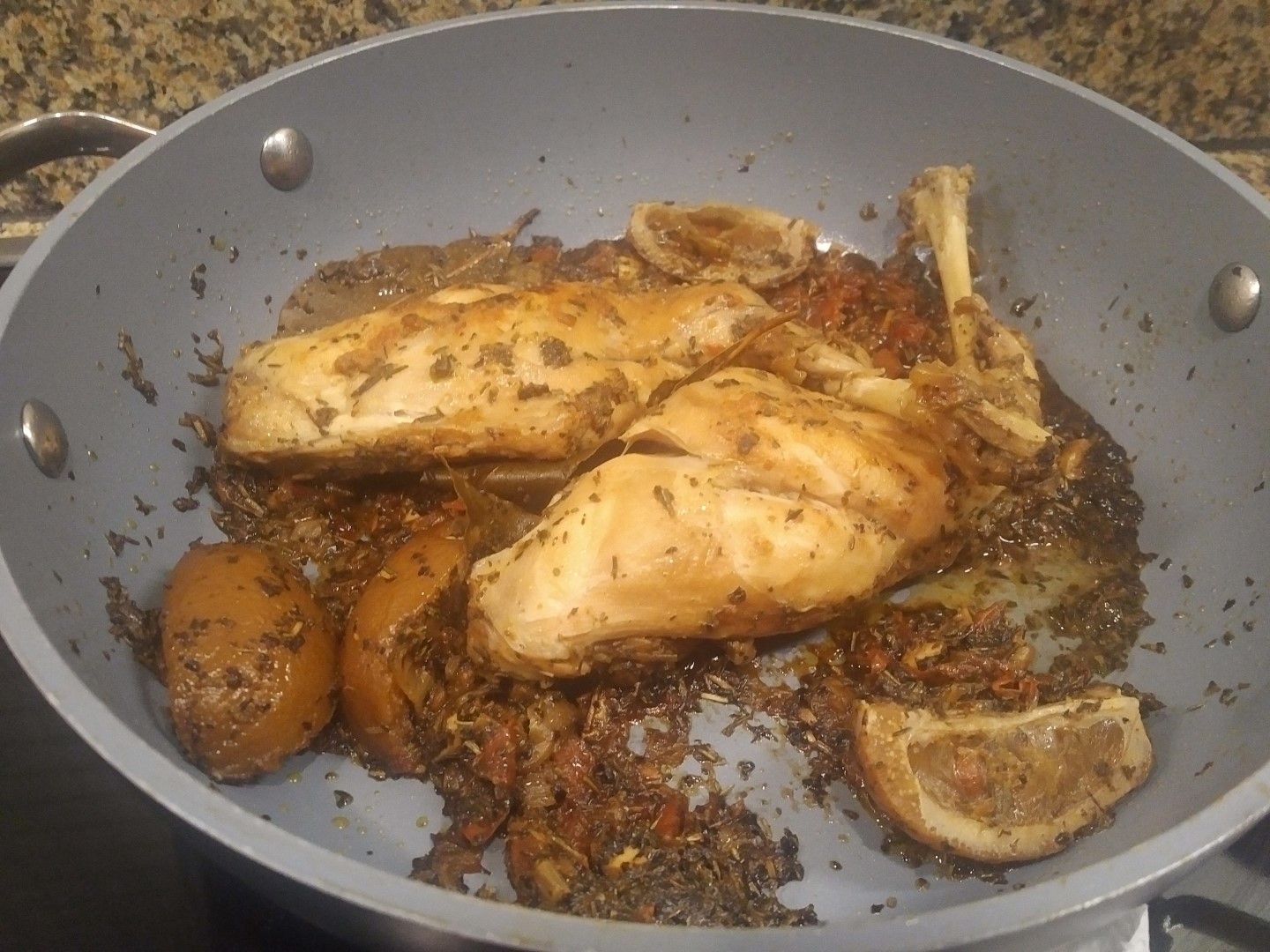There are some parts of the world where rabbits are considered pets. Most people will eat other farm animals such as cows, chickens and lambs, but will regard rabbit as off limits. Other people, like yours truly, grew up being served rabbit regularly. In fact, my grandmother’s special rabbit stew is one of those secretly guarded family recipes which has been handed down over generations.
There are two major reasons you should be including this lean white meat on your shopping list. First and foremost, since this blog is all about health, it is a healthy meat. Much healthier than red meats. Aside from being rich in vitamin B12 (85grams provide 117.5% of B12, more than the Recommended Daily Amount), it should be your protein of choice if you are counting the calories and trying to lose weight. Let me put it into perspective for you, the same 85 grams of beef mentioned above contain 260 kcals, compare that to the 167 kcals of the same amount of rabbit. Have I got your attention yet? Plus it is lean and has little fat, which helps keep your heart healthier than red meat.
The second reason is one which has been the subject of a lot of debate in recent times. Beef, we are told, is damaging the environment and we should all be reducing the quantity we consume or, some will say, we should even consider cutting out beef altogether. The environmentally friendly alternative? Rabbit. Consider this, from conception to the table the process of breeding rabbits as food is just over 3 months. We all know that rabbits eat far less than cows, and they also breed very quickly. They also take up a lot less space.
These two reasons alone should be enough to make you consider eating more rabbit meat. Not enough? Paella wouldn’t be what it is without this basic ingredient, but aside from this popular dish, rabbit can be cooked in a variety of different ways and it is extremely versatile.
There is something else that bears thinking about. Chicken is more often than not full of hormones and other fillers. It is commonly known for not being very healthy in this respect. From the little information I have found on this, I suspect that rabbits, being much less in demand, are less likely to be (mis)treated to the same extent. Plus, rabbit meat is cheap compared to a lot of other meats.
Unfortunately, my local shops don’t often have fresh, or frozen, rabbit available. When I see it, I buy it and freeze some for future use. However, since grandma’s recipe is a little too long for someone who doesn’t have a lot of time on their hands, I decided to experiment and came up with my own alternative recipe which I am sharing below to kick start you on a discovery of rabbit as an alternative white meat.
Rabbit legs with herbs and lemon
Ingredients (serves 2)
2 rabbit legs (on the bone)
1 medium sized tomato
1 small shallot
3 cloves of garlic
2 tsp dried thyme
2 tsp dried basil
1 tsp dried rosemary
2 tsp dried oregano
3 bay leaves
¼ preserved lemon
Approx. 200 ml vegetable stock (made with half a cube)
2 tbsp olive oil for cooking
A pinch of salt for seasoning (optional)
Method
1. Heat the olive oil at the bottom of a ceramic pot with lid, and sauté the finely chopped shallot at a medium heat until it starts to turn translucent.
2. Add the finely chopped garlic and cook for a few seconds to allow it to infuse the oil without burning.
3. Wash the fresh tomato, chop it into small cubes and add to the pot. Cook for a few minutes until it starts to blend.
4. Next, add the dried spices and bay leaves to the pot.
5. Place the rabbit legs in the pot and brown each side on a medium to low heat.
6. Once browned, add the stock and the preserved lemon cut into strips.
7. Cover and allow the meat to cook on a low heat for approximately 40 minutes or until the meat comes off the bone easily. Remember that older rabbits require longer cooking times than young rabbit meat.
8. Check the pot regularly and add a little more stock if necessary to prevent it from sticking or burning.
9. Once cooked, the stock should have reduced and evaporated and you should be left with a fairly dry dish although the meat itself will be moist.
10. Serve hot with a fresh salad on the side.
There you have it, sometimes simple is best.
Enjoy your rabbit and don’t be afraid to create your own recipes! Happy cooking!


